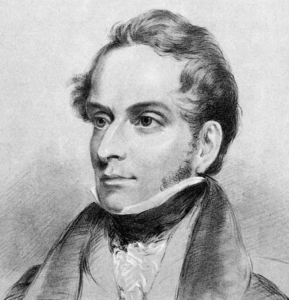Our hotel in Dublin was on a street of Georgian townhouses, and as far as I could tell it was created from an amalgam of at least two such structures. One of the city’s two tram lines runs down the street, with a stop a two-minute walk away from where we stayed.
St. Stephen’s Green was about five minutes away on foot in the other direction. Often enough we’d forgo part of the tram ride for a stroll through the greens of the park on cool and bright May mornings.

“This nine hectare/22-acre park, in Dublin City Centre, has been maintained in the original Victorian layout with 750 trees, extensive shrub planting with spring and summer Victorian flower bedding,” says Visit Dublin.
A Victorian-era creation. Of course. The site had been open land long before that, such as a marshy commons for centuries, then essentially a private green as its perimeter developed. In the 1870s, Baron Ardilaun acquired the land and donated it to the Dublin Corporation (the city). I had to look him up and the baron turned out to be – yet another Guinness, Arthur Edward, son of the renovator of St. Patrick’s Cathedral. Another good use for beer money.
Part of the landscaping includes water features.

History wasn’t done with St. Stephen’s Green after it became a city park. In 1916, the green figured in the Easter Rising.
“The rebels dug trenches, probably at the four entranceways and other places – the written sources aren’t very specific about where they were,” University of Bristol reader in archaeology Joanna Brück told Irish Central.
“There has been debate over whether it was a strategically good location to take over or not,” she said, but in any case their presence at the green wasn’t any more successful than anywhere else that week for the rebels.
Toward the end of our visit, we made our way to another Dublin greenspace, one much larger (707 hectares/1,750 acres) in the western reaches of the city: Phoenix Park.
Though as a distinct tract of land, the park has a long history – site of an abbey that Henry VIII squelched, a royal hunting park – it took its modern form during the Victorian era (I’m sensing a pattern here). None other than Decimus Burton gave the park its current form.
I’d call him the Frederick Law Olmstead of the British Isles for his many parks, but actually Burton was a little earlier, and designed many structures as well. Still, as landscape designers, they’re clearly in the same league.


That afternoon also happened to be the warmest one during our visit, which added to the pleasure of the walk. We didn’t get that far, considering how large Phoenix Park is, but we made it to the gazebo near the zoo. An Irish gazebo, which are distinctive since independence for not having sides. Go ahead, look it up.
A picturesque water feature, with trees and bushes and birds to go with.


A scattering of memorials, such as that of Seán Heuston.
I didn’t know who he was, though I noticed that his name is attached to a nearby tram stop as well. I figured he died for independence. Yes, indeed. Led men in 1916 and met his end at Kilmainham Gaol not long after.
Not far away from Heuston is an example of de-memorialization.
The plinth remains, surrounded by trees that were obviously planted for the purpose of obscuring the site. There is still carving on the plinth, however, which is only partly readable, but I figured it out. Once upon a time (1870-1956), a statue of George William Frederick Howard, 7th Earl of Carlisle, stood there. He was Palmerston’s Lord Lieutenant of Ireland for a couple of stints in the mid-19th century, and his statue wasn’t a relic of the Victorian era that at least some Irish cared to keep. It was bombed.
The obelisk honoring Arthur Wellesley, 1st Duke of Wellington, on the other hand, still stands tall in Phoenix Park, despite him being born into the Protestant Ascendancy.
After all, Wellington was a Dubliner who gave Napoleon his final bum’s rush from the world stage, and supported Catholic Emancipation besides.
The bronze used for the plaques, on all four sides, is from cannons captured at Waterloo.
One reason I wanted to visit Phoenix Park was that I’ve known about it for so long, since ca. 1980. One day at the Vanderbilt Library, I discovered a microfilm collection of decades of The Times of London, which maybe went all the way back to the paper’s founding in the 1780s. Flipping through it more-or-less at random provided a fascinating pastime for me, because that’s the kind of interest in history I have (not a disciplined one of a scholar).
Completely by chance I came across a flood of column inches for days and days in the spring of 1882 about what would be called the Phoenix Park Murders. I had to look up the location of Phoenix Park, and more about the murders, and never forgot.
Our afternoon walk in the park was long, interspersed with rests on benches, of which there are too few, and sometimes by reclining on the ground. Such as on this daisy-covered slope.

Better, it occurred me on that sunny day in Ireland, to be pushing down the daisies than pushing them up.
